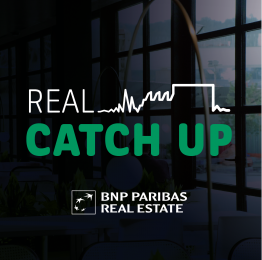The real estate sector is a large consumer of waste, from the construction phase of a building, right up to how it is run on a daily basis. The drive to integrate a sustainable approach into many projects has reached new heights and as Grégoire Tripon explains, “Many of our investors are very focused on energy transition and bettering the energy performance of a building. So, we have to put many actions in place to ensure that the building consumes correctly in terms of the energy needed to heat it or light it. This of course is in relation to the comfort of the occupants, which is not always easy to maintain, am I going to be too hot or too cold? And at the same time ensuring that we don’t over consume energy which is becoming rarer and rarer. But, once we have been able to do this, we’re going to be able to start attacking the other environmental performance challenge which is the circular economy, with all that that involves today, on the one hand in terms of offers and demand and consummation habits within the real estate profession and also reusing materials.”

Building differently: the drive for a circular economy approach


We recovered these bricks (from the original structure) and reused them to create exposed brick decoration. That is typically an example of reuse. Like the cement pillars which support the structure, these are pillars which have been reused, renovated and reinforced. We have the same thing in part of the metallic structure, which holds part of the characteristic signature of METAL 57, the saw-tooth roof. We used the original metallic structure, as there was an architectural action that we wanted to conserve within the renovation of METAL 57 and the creation of this new building
The circular economy within METAL 57
The iconic METAL 57 building was designed in a way that made use of the existing materials that came from the building’s history as a factory for Renault.
Grégoire Tripon describes the elements which have been reused for the new life of METAL 57, stating that, “We recovered these bricks (from the original structure) and reused them to create exposed brick decoration. That is typically an example of reuse. Like the cement pillars which support the structure, these are pillars which have been reused, renovated and reinforced. We have the same thing in part of the metallic structure, which holds part of the characteristic signature of METAL 57, the saw-tooth roof. We used the original metallic structure, as there was an architectural action that we wanted to conserve within the renovation of METAL 57 and the creation of this new building.”
The careful reusing of materials therefore must take into account the feasibility of materials, their history and the way in which carbon emissions can be reduced. Indeed, the circular economy fits into an over-arching sustainability strategy which works from different angles to reduce emissions and promote positive climate actions. As Grégoire Tripon explains, “Within the percentage of all the material that we used to construct the (METAL 57) building, it is only a small one, but nevertheless, it’s a step in the right direction, towards reuse of materials and demonstrating that we can do it and are conscious of the preservation of resources. We are focused on energy performance as that is what is technically the most efficient in the short term, but once we’ve been able to do that, we won’t have any other choice but to take on the way in which we consume resources, how we recycle and reuse them.”
-
 Episode 1
Episode 1The history of buildings must not be forgotten
-
 Episode 2
Episode 2Building reversibly and optimising square metres
-
 Episode 4
Episode 4How can our urban cities encourage greater biodiversity?




